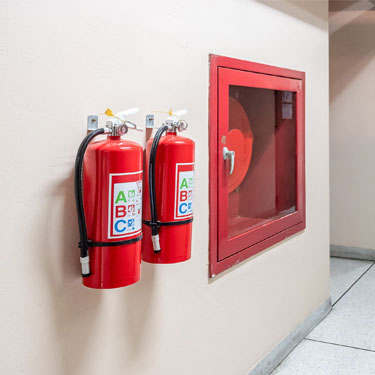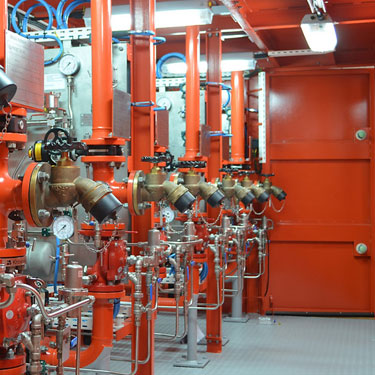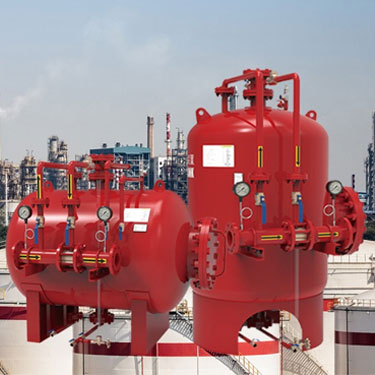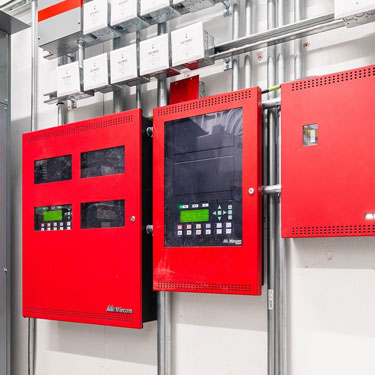
At Ocean International, our Fire & Safety division is dedicated to providing comprehensive fire protection solutions that ensure life safety and property security. We are proud to be a registered contractor for NAFFCO, a global leader in fire safety systems. Our portfolio includes major installations at prestigious sites such as China Harbour, Jeddah, and the Royal Fleet Airport, Jeddah, among many others. Our services cover design, supply, installation, and maintenance of fire alarm and suppression systems, in compliance with international and civil defense standards. We prioritize quality, reliability, and rapid response to protect what matters most.

Deluge Valve Installation allows rapid water discharge through open nozzles, providing immediate and widespread fire suppression in high-risk areas such as industrial plants, power stations, and aircraft hangars. This system is activated by a fire detection mechanism, ensuring quick response to intense fires and preventing large-scale damage.

Foam Tank Installation involves setting up a dedicated storage and delivery system for fire-suppressing foam concentrate, specifically designed to combat flammable liquid fires. Commonly used in high-risk areas such as fuel storage facilities, chemical plants, airports, and refineries, foam tanks work as part of a foam fire suppression system. When activated, the tank supplies foam concentrate to proportioning devices, where it is mixed with water and air to form a foam blanket. This foam effectively smothers the fire, cuts off the oxygen supply, and cools the fuel surface, preventing re-ignition. Proper installation ensures quick deployment and reliable performance during critical fire emergencies.

Fire Alarm Panel Installation involves setting up the central control unit that monitors and manages fire detection devices such as smoke detectors, heat sensors, and manual call points. It serves as the brain of the fire alarm system, receiving signals from connected devices and triggering alarms, notifications, or emergency responses when fire or smoke is detected. This ensures timely alerts and coordinated action to protect occupants and property.
